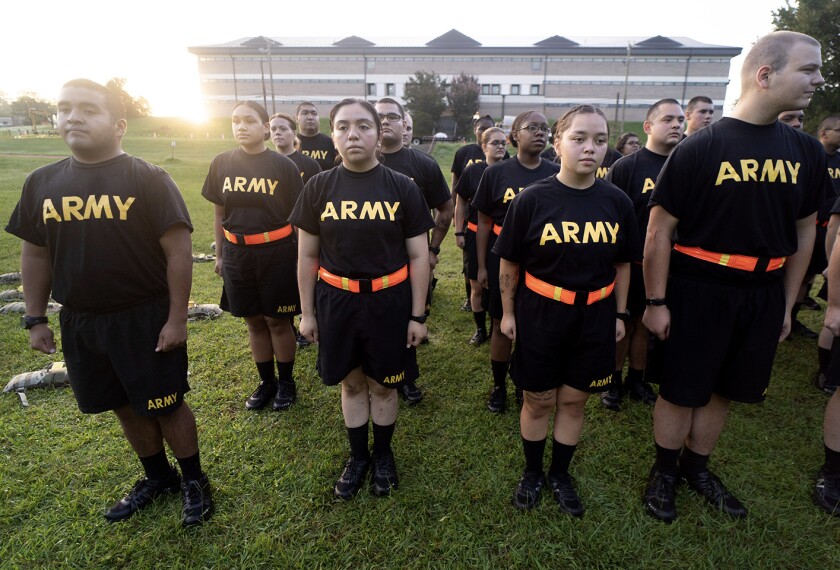Of all the terms used to describe Alexandria Area High School in Alexandria, Minn., one that comes up frequently is “flexible.”
Perhaps the reason is because the $73.2 million, 283,000-square-foot structure set in this wealthy resort community in the middle of the state was designed with the rapid pace of technological change and the future of education in mind.
“This building will be here for the next 50 years as our high school,” explained Principal Chad Duwenhoegger. “I don’t know what education looks like 50 years from now. We need to be flexible with it.”
Much of the flexibility of the new three-story building—which has been dubbed as everything from the “Alexandria University” to the “Googleplex of Schools"—emanates from the fact that it doesn’t have traditional classrooms and hallways, but rather open floor plans and moveable walls that allow the classrooms to be reconfigured as needed.
And not those old “accordion” walls like the ones that can be used to convert one large room in, say, a hotel, into two or more rooms. Rather, the school has moveable glass walls that can be written on with markers and have various forms of technology—such as flat-screen TVs or whiteboards—installed on them or removed within hours.
“It allows us to grow and be flexible and do whatever we need to do to reach kids,” Duwenhoegger said. And that flexible space is being used in interesting ways to accommodate nontraditional learning approaches.
For example, two classrooms are sometimes connected so that teachers from can team-teach in an interdisciplinary way.
That approach was being taken this spring by a physics teacher and an industrial-technology teacher, whose students collaborated to build a remote-controlled car and learn physics through the process, according to Duwenhoegger.
The furniture inside the classrooms—which ranges from soft couches to regular hard chairs and a variety of tables—can also be easily moved and rearranged to accommodate students with different learning preferences or needs.
“My classes tend to be designed around collaborative scientific inquiry experiences,” said Tom Smith, a chemistry and earth sciences teacher. “I need a classroom that can quickly flip between a teacher-focused design to a collaborative design to a student-discussion design at a moment’s notice. ... This facility does that for me.”
‘A Mental Pause’
People might assume that students inside a glass classroom might be more susceptible to distractions. But the situation is quite the opposite, said the designer, John Pfluger of Cuningham Group Architecture Inc.
“There’s a philosophy that I think we used to have for a long time as designers and educators, that kids will be easily distracted if they have a view of the outside, a view of other parts of the building,” Pfluger said. “What we have come to understand about the learning process is that it’s really critical that in a learning setting, you’re able to take a break.
“You can pay attention for about 15 minutes tops—and this is sort of well-grounded, proven research—and one of the best ways to take a break is to be able to look outside the environment you’re in,” he said. “It gives you a mental pause.”

Overall, with input from the community, the school was designed—both its exterior and interior—to look like anything except what it is.
Pfluger said the idea was to break out of the mold of the old “cells and bells” style of high schools that characterized many, if not most, of the those built during the 20th century, and to make the new high school more like the places where its students are headed next—college, the workplace, or even a favorite hangout.
“It doesn’t feel like a school,” Pfluger said. “It feels more like a blend, sort of a mash-up between kind of a hotel or Starbucks and an Apple store.”
The three-story common area—where students can choose from a variety of food services rather than stand in a single cafeteria line—gets flooded with sunlight. Guidance counselors’ officers are deliberately placed nearby so students can interact with them during lunch.
Outside the classrooms are “learning stairs,” or giant wooden steps where students can lounge or work on group projects or do presentations.
The school has two three-story “towers” that house four different “academies” with about 300 students apiece. Those academies include the freshman academy, where students explore different career paths and then select one of the three other academies in which they want to enroll for the next three years: the business, communication & entrepreneurship academy; the engineering, manufacturing technologies, and natural resources academy; and the health sciences and human services academy.
“It’s about getting kids to figure out what they’re passionate about and what are all the tons of careers out there that are in their area of their passion,” Duwenhoegger said.





